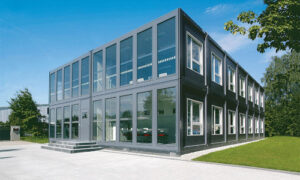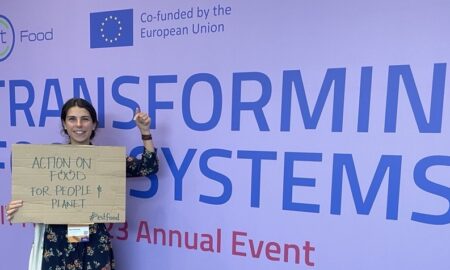In the realm of plumbing, few aspects are as crucial yet often overlooked as backflow prevention. This vital component of your water system plays a pivotal role in maintaining the purity and safety of your drinking water. As we delve into the intricacies of backflow prevention, we’ll explore its significance, the various devices employed, and why it’s an indispensable element of modern plumbing systems. Whether you’re a homeowner in North Melbourne or a business owner in Seymour, understanding backflow prevention is key to ensuring the health and safety of your water supply.
Backflow prevention is not merely a technical consideration; it’s a fundamental aspect of public health and safety. By preventing the reverse flow of water in your plumbing system, these devices act as guardians against potential contamination. Throughout this comprehensive guide, we’ll unravel the complexities of backflow prevention, equipping you with the knowledge to make informed decisions about your property’s plumbing needs.
From the basics of how backflow occurs to the advanced technologies used in prevention, we’ll cover every aspect you need to know. We’ll also discuss the legal requirements, the importance of regular maintenance, and how to choose the right backflow prevention solution for your specific needs. So, let’s embark on this journey to understand the critical role of backflow prevention in safeguarding our water supply.
Understanding Backflow: The Hidden Threat to Water Quality
Backflow is a phenomenon that occurs when water flows in the opposite direction to its intended path within a plumbing system. This reversal can lead to serious contamination issues, potentially introducing harmful substances into your drinking water. To fully grasp the importance of backflow prevention, it’s crucial to understand the mechanisms behind this occurrence and the risks it poses.
The Mechanics of Backflow
Backflow typically happens due to changes in water pressure within the system. When the pressure in the main water supply drops below that of the connected system, it creates a vacuum effect. This pressure differential can cause water to flow backwards, potentially drawing contaminants into the clean water supply. This scenario is particularly concerning in areas with fluctuating water pressure, such as rapidly growing urban centres or regions prone to natural disasters.
Types of Backflow
There are two primary types of backflow: back-siphonage and backpressure. Back-siphonage occurs when negative pressure in the supply line draws contaminated water back into the system. This can happen during water main breaks or when fire hydrants are in use. Backpressure, on the other hand, results from pressure in the connected system exceeding that of the supply line. This is common in systems with pumps or elevated storage tanks.
Potential Contaminants
The list of potential contaminants that can enter the water supply through backflow is extensive and alarming. It includes chemicals from irrigation systems, bacteria from sewage lines, and even industrial pollutants. In residential settings, common household chemicals like pesticides or cleaning agents can pose a significant risk if drawn back into the potable water supply.
Health Risks Associated with Backflow
The health implications of consuming contaminated water due to backflow can be severe. Waterborne illnesses caused by bacteria, viruses, and parasites can lead to gastrointestinal issues, respiratory problems, and in extreme cases, more serious health complications. The risk is particularly high for vulnerable populations such as the elderly, young children, and those with compromised immune systems.
The Importance of Backflow Prevention in Plumbing Systems
Backflow prevention is not just a matter of maintaining water quality; it’s a critical component of public health infrastructure. By implementing effective backflow prevention measures, we create a barrier against potential contamination, ensuring that our drinking water remains safe and potable. This section explores why backflow prevention is so crucial and the various contexts in which it plays a vital role.
Protecting Public Health
The primary importance of backflow prevention lies in its role in safeguarding public health. By preventing the intrusion of contaminants into the water supply, these systems act as a first line of defence against waterborne diseases. This is particularly crucial in densely populated urban areas where a single contamination event could affect thousands of people.
Maintaining Water Quality Standards
Regulatory bodies set strict standards for drinking water quality, and backflow prevention is a key component in meeting these requirements. By preventing the introduction of pollutants, these systems help maintain the chemical and biological balance of the water supply, ensuring it remains safe for consumption and use.
Economic Implications
The economic impact of backflow incidents can be substantial. From the costs associated with cleaning and decontaminating affected water systems to potential legal liabilities, the financial ramifications of a backflow event can be significant. Implementing proper prevention measures is often far more cost-effective than dealing with the aftermath of contamination.
Environmental Protection
Backflow prevention also plays a role in environmental protection. By preventing contaminants from entering the water supply, these systems help maintain the ecological balance of water sources and protect aquatic ecosystems from potential harm caused by pollutants.
Industrial and Commercial Applications
In industrial and commercial settings, backflow prevention is crucial for protecting both the public water supply and the integrity of internal processes. Many industries use chemicals or substances that, if introduced into the public water system, could pose significant health risks. Proper backflow prevention ensures these substances remain isolated from the potable water supply.
Types of Backflow Prevention Devices: Choosing the Right Solution
Selecting the appropriate backflow prevention device is crucial for ensuring the safety and integrity of your water supply. Different situations and risk levels require different types of devices. In this section, we’ll explore the various backflow prevention devices available, their specific applications, and how to choose the right one for your needs.
Air Gap Separations
Air gap separations are the simplest and most effective form of backflow prevention. They create a physical separation between the water supply outlet and any potential source of contamination. This method is often used in sinks, drinking fountains, and other fixtures where there’s a visible gap between the water outlet and the flood level rim of the receiving vessel.
Atmospheric Vacuum Breakers (AVB)
Atmospheric vacuum breakers are simple devices that prevent back-siphonage. They contain a float check valve that seals off the air inlet port when water flows in the normal direction. AVBs are commonly used in irrigation systems and are effective against low-hazard applications.
Pressure Vacuum Breakers (PVB)
Pressure vacuum breakers offer protection against back-siphonage in high-hazard situations. They contain a spring-loaded check valve and an air inlet valve that closes when water flows normally. PVBs are often used in lawn irrigation systems and can be installed under constant pressure.
Double Check Valve Assemblies (DCVA)
Double check valve assemblies consist of two independently operating spring-loaded check valves. They provide protection against both backpressure and back-siphonage in low to medium hazard applications. DCVAs are commonly used in fire sprinkler systems and commercial buildings.
Reduced Pressure Zone Devices (RPZ)
Reduced pressure zone devices offer the highest level of protection against both backpressure and back-siphonage. They contain two independently operating check valves with a reduced pressure zone between them. RPZs are used in high-hazard situations, such as medical facilities, chemical plants, and other applications where contamination risks are severe.
Spill-Resistant Vacuum Breakers (SVB)
Spill-resistant vacuum breakers are similar to pressure vacuum breakers but are designed to minimize water spillage during activation. They’re often used in indoor applications where water spillage could cause damage.
Backflow Testing: Ensuring Ongoing Protection
Regular testing of backflow prevention devices is crucial to ensure they continue to function effectively. This section delves into the importance of backflow testing, the testing process, and the frequency with which these tests should be conducted.
The Importance of Regular Testing
Backflow prevention devices, like any mechanical system, can fail over time due to wear and tear, corrosion, or debris accumulation. Regular testing helps identify any issues before they lead to a potential contamination event. It’s not just a best practice; in many jurisdictions, it’s a legal requirement for property owners.
The Backflow Testing Process
Backflow testing is a detailed process that should only be carried out by certified professionals. The test typically involves:
- Visual inspection of the device for any obvious signs of damage or wear
- Checking the operation of shut-off valves
- Testing the check valves to ensure they’re sealing properly
- For RPZ devices, testing the relief valve to ensure it opens at the correct pressure differential
- Recording and reporting the test results
Frequency of Testing
The required frequency of backflow testing can vary depending on local regulations and the type of device. However, as a general rule:
- Residential properties: Annual testing is typically recommended
- Commercial properties: May require more frequent testing, sometimes twice a year
- High-risk facilities (e.g., hospitals, chemical plants): May require quarterly testing
Importance of Professional Testing
While some aspects of plumbing maintenance can be handled by property owners, backflow testing should always be conducted by certified professionals. These experts have the knowledge, tools, and certifications necessary to accurately test and certify backflow prevention devices.
Record Keeping
Maintaining accurate records of backflow tests is crucial. These records serve as proof of compliance with local regulations and can be invaluable in the event of a contamination incident. Many plumbing professionals provide detailed reports after each test, which should be kept on file.
Legal Requirements and Regulations for Backflow Prevention
Backflow prevention is not just a matter of best practice; it’s often a legal requirement. Understanding the regulatory landscape surrounding backflow prevention is crucial for property owners and managers. This section explores the legal aspects of backflow prevention, including regulations, compliance, and the consequences of non-compliance.
National Standards and Guidelines
In Australia, the national standards for backflow prevention are set out in AS/NZS 3500.1:2021 – Plumbing and drainage, Part 1: Water services. This standard provides guidelines for the design, installation, and testing of backflow prevention devices. It’s crucial for property owners and plumbers to be familiar with these standards to ensure compliance.
Local Council Regulations
While national standards provide a framework, specific regulations often vary at the local council level. Many councils have their own bylaws regarding backflow prevention, which may include:
- Requirements for specific types of properties or businesses
- Frequency of testing and maintenance
- Reporting and record-keeping obligations
- Penalties for non-compliance
Water Authority Requirements
Water authorities often have additional requirements for backflow prevention, particularly for properties connected to the public water supply. These may include:
- Mandatory installation of backflow prevention devices for certain property types
- Regular inspections by water authority representatives
- Specific reporting procedures for test results
Compliance and Certification
Compliance with backflow prevention regulations typically involves:
- Initial installation of appropriate devices by licensed plumbers
- Regular testing by certified backflow testers
- Maintenance and replacement of devices as necessary
- Keeping accurate records of all tests and maintenance
Many jurisdictions require property owners to submit annual compliance certificates, proving that their backflow prevention devices have been tested and are functioning correctly.
Consequences of Non-Compliance
Failing to comply with backflow prevention regulations can have serious consequences, including:
- Fines and penalties
- Disconnection from the water supply
- Legal liability in case of contamination incidents
- Increased insurance premiums or loss of coverage
Staying Informed
Given the importance of compliance, it’s crucial for property owners to:
- Stay up-to-date with local regulations
- Work with licensed plumbers and certified backflow testers
- Keep accurate records of all backflow prevention activities
- Respond promptly to any notices or requests from local authorities
Installation and Maintenance of Backflow Prevention Devices
Proper installation and ongoing maintenance of backflow prevention devices are crucial for ensuring their effectiveness and longevity. This section covers the key aspects of installation, maintenance, and the importance of professional expertise in these processes.
Installation Considerations
The installation of backflow prevention devices requires careful planning and execution. Key considerations include:
- Device Selection: Choosing the right type of device based on the level of hazard and specific application.
- Location: Installing the device in an accessible location for easy testing and maintenance.
- Orientation: Ensuring the device is installed in the correct orientation as per manufacturer specifications.
- Clearances: Providing adequate clearance around the device for servicing.
- Protection: Shielding the device from extreme temperatures, debris, and potential physical damage.
Professional Installation
While some simple backflow preventers can be installed by property owners, most devices require professional installation. Licensed plumbers have the expertise to:
- Correctly size the device for the application
- Ensure compliance with local codes and regulations
- Properly connect the device to existing plumbing systems
- Conduct initial testing to verify proper operation
Routine Maintenance
Regular maintenance is essential for the continued effectiveness of backflow prevention devices. This typically includes:
- Visual Inspections: Checking for signs of wear, corrosion, or damage.
- Cleaning: Removing any debris or build-up that could affect performance.
- Lubrication: Applying lubricant to moving parts as recommended by the manufacturer.
- Component Replacement: Replacing worn seals, gaskets, or other components as needed.
Winterization
In areas prone to freezing temperatures, winterization of backflow prevention devices is crucial. This may involve:
- Draining the device to prevent freeze damage
- Installing insulation or heat tape
- In some cases, removing the device entirely for the winter months
Troubleshooting Common Issues
Even with proper maintenance, backflow prevention devices can sometimes experience issues. Common problems include:
- Leaks from relief valves
- Failure to hold pressure
- Continuous discharge
Property owners should be aware of these potential issues and seek professional assistance if they occur.
Record Keeping
Maintaining detailed records of installation, maintenance, and repairs is important for:
- Demonstrating compliance with regulations
- Tracking the device’s performance over time
- Planning for future replacements or upgrades
Professional Expertise
While some aspects of maintenance can be handled by property owners, it’s crucial to involve certified professionals for:
- Annual testing and certification
- Complex repairs or replacements
- Addressing any unusual performance issues
By ensuring proper installation and maintaining a regular maintenance schedule, property owners can maximize the effectiveness and lifespan of their backflow prevention devices, thereby safeguarding their water supply and complying with regulatory requirements.
Common Backflow Scenarios and Prevention Strategies
Understanding common backflow scenarios and their prevention strategies is crucial for effective water system management. This section explores various situations where backflow is likely to occur and outlines specific prevention measures for each.
Residential Irrigation Systems
Scenario: Lawn and garden irrigation systems are a common source of backflow risk in residential settings.
Prevention Strategy:
- Install a pressure vacuum breaker or atmospheric vacuum breaker at the highest point of the system.
- Ensure proper drainage to prevent standing water near sprinkler heads.
- Regularly inspect and maintain the system, especially before the start of each watering season.
Swimming Pools and Hot Tubs
Scenario: The chemicals used in pools and hot tubs can pose a significant contamination risk if drawn back into the potable water supply.
Prevention Strategy:
- Install an air gap or reduced pressure zone device on the water supply line to the pool or hot tub.
- Never submerge hoses used for filling pools in the water.
- Use a separate, dedicated water line for pool chemical injection systems.
Boiler Systems
Scenario: Boilers, especially those with chemical additives, can create backpressure that forces contaminated water back into the supply line.
Prevention Strategy:
- Install a reduced pressure zone device on the water supply line to the boiler.
- Regularly inspect and maintain the boiler system, including checking for proper pressure relief valve operation.
- Ensure proper venting to prevent pressure build-up.
Commercial Kitchen Equipment
Scenario: Dishwashers, ice makers, and other kitchen equipment can create cross-connections with the potable water supply.
Prevention Strategy:
- Install appropriate backflow preventers on all equipment connected to the water supply.
- Use air gaps on sink faucets and dishwasher drainage systems.
- Regularly inspect and clean all backflow prevention devices in the kitchen area.
Industrial Processes
Scenario: Many industrial processes involve chemicals or substances that could severely contaminate the water supply if backflow occurs.
Prevention Strategy:
- Implement a comprehensive backflow prevention program, including regular risk assessments.
- Install reduced pressure zone devices on all connections to industrial equipment.
- Conduct frequent testing and maintenance of all backflow prevention devices.
Fire Sprinkler Systems
Scenario: Fire sprinkler systems can introduce stagnant water or anti-freeze solutions into the potable water supply.
Prevention Strategy:
- Install a double check valve assembly or reduced pressure zone device, depending on the system type and local regulations.
- Regularly test and maintain the backflow prevention device as part of the overall fire safety system maintenance.
Hospitals and Medical Facilities
Scenario: Medical facilities often have complex plumbing systems with multiple potential cross-connections.
Prevention Strategy:
- Implement a facility-wide backflow prevention program.
- Install reduced pressure zone devices on all critical water supply lines.
- Conduct frequent testing and maintain detailed records of all backflow prevention activities.
Agricultural Operations
Scenario: Farms and agricultural facilities often use chemicals and fertilizers that pose a high contamination risk.
Prevention Strategy:
- Install appropriate backflow preventers on all irrigation systems and chemical injection equipment.
- Use air gaps or reduced pressure zone devices on water supplies used for mixing chemicals.
- Implement strict protocols for handling and disposing of potentially contaminated water.
By understanding these common scenarios and implementing appropriate prevention strategies, property owners and managers can significantly reduce the risk of backflow incidents. Regular assessment of potential cross-connections and updating prevention measures as needed is key to maintaining a safe and compliant water system.
The Role of Professional Plumbers in Backflow Prevention
Professional plumbers play a crucial role in ensuring effective backflow prevention. Their expertise is essential for proper installation, maintenance, and troubleshooting of backflow prevention devices. This section highlights the importance of professional plumbing services in maintaining water safety and compliance with regulations.
Expert Assessment and Device Selection
Professional plumbers have the knowledge and experience to:
- Assess the specific backflow risks for a property
- Recommend the most appropriate type of backflow prevention device
- Ensure the selected device complies with local regulations and industry standards
Their expertise is particularly valuable in complex systems or high-risk environments where the consequences of backflow could be severe.
Proper Installation
Correct installation of backflow prevention devices is critical for their effectiveness. Professional plumbers:
- Understand the intricacies of different device types and their installation requirements
- Ensure devices are installed in the correct orientation and location
- Properly size devices to match the water flow and pressure requirements of the system
- Conduct post-installation testing to verify proper operation
Regular Maintenance and Testing
Ongoing maintenance and testing are essential for the continued effectiveness of backflow prevention devices. Professional plumbers:
- Conduct annual or more frequent testing as required by local regulations
- Perform necessary maintenance tasks such as cleaning and parts replacement
- Provide detailed reports and documentation of all testing and maintenance activities
Troubleshooting and Repairs
When issues arise with backflow prevention devices, professional plumbers have the skills to:
- Diagnose problems accurately
- Perform necessary repairs or replacements
- Ensure the system returns to full compliance after repairs
Staying Current with Regulations
Professional plumbers stay up-to-date with:
- Changes in local and national regulations regarding backflow prevention
- Advancements in backflow prevention technology
- Best practices for installation and maintenance
This knowledge is crucial for ensuring ongoing compliance and optimal system performance.
Emergency Response
In the event of a suspected backflow incident, professional plumbers can:
- Quickly assess the situation
- Implement immediate containment measures
- Coordinate with local authorities if necessary
- Develop and execute a plan to resolve the issue and prevent future occurrences
Education and Advice
Professional plumbers also play an important role in educating property owners about:
- The importance of backflow prevention
- Proper care and maintenance of backflow prevention devices
- Signs of potential backflow issues to watch for
Certification and Licensing
Many jurisdictions require specific certifications for plumbers working on backflow prevention systems. Professional plumbers:
- Maintain necessary certifications and licenses
- Understand the legal requirements and liabilities associated with backflow prevention
- Provide services that meet or exceed regulatory standards
By engaging professional plumbing services for backflow prevention, property owners can ensure their water systems are safe, compliant, and effectively protected against the risks of contamination. The expertise and services provided by professional plumbers are invaluable in maintaining the integrity of our water supply systems.
Innovations in Backflow Prevention Technology
The field of backflow prevention is continually evolving, with new technologies and innovations emerging to enhance safety, efficiency, and ease of use. This section explores some of the latest advancements in backflow prevention technology and their potential impact on water safety and management.
Smart Backflow Prevention Devices
Smart technology is making its way into backflow prevention, offering:
- Real-time monitoring of device performance
- Automatic alerts for potential issues or failures
- Remote testing capabilities, reducing the need for on-site inspections
- Integration with building management systems for comprehensive water system oversight
These smart devices can significantly improve response times to potential backflow incidents and streamline maintenance processes.
Advanced Materials and Design
Innovations in materials science are leading to:
- More durable and corrosion-resistant components
- Lighter weight devices that are easier to install and maintain
- Improved sealing technologies that reduce the risk of leaks
- Designs that minimize pressure loss, improving overall system efficiency
These advancements contribute to longer-lasting, more reliable backflow prevention devices.
Modular and Customizable Systems
New modular designs allow for:
- Easier installation in tight spaces
- Greater flexibility in system configuration
- Simplified maintenance and part replacement
- Scalability to accommodate changing needs or system expansions
These modular systems can be particularly beneficial in complex industrial or commercial settings.
Enhanced Testing Equipment
Advancements in testing technology include:
- More accurate and sensitive testing instruments
- Portable devices that can quickly assess multiple backflow preventers
- Digital record-keeping systems that streamline compliance documentation
- Automated testing procedures that reduce human error
These improvements in testing equipment lead to more reliable and efficient backflow prevention programs.
Integrated Water Quality Monitoring
Some advanced backflow prevention systems now incorporate:
- Continuous water quality monitoring sensors
- Real-time analysis of water composition
- Automatic shut-off capabilities in case of detected contamination
- Data logging for long-term water quality trend analysis
This integration of water quality monitoring with backflow prevention provides an additional layer of protection against contamination events.
Sustainable and Eco-Friendly Solutions
Innovations focusing on sustainability include:
- Energy-efficient designs that reduce overall water system power consumption
- Materials and manufacturing processes with lower environmental impacts
- Systems that minimize water waste during testing and maintenance
- Integration with water conservation technologies
These eco-friendly solutions align backflow prevention with broader sustainability goals.
Artificial Intelligence and Predictive Maintenance
The application of AI in backflow prevention is leading to:
- Predictive maintenance models that anticipate potential failures before they occur
- Optimization of testing and maintenance schedules based on usage patterns and environmental factors
- Advanced data analysis to identify trends and improve overall system performance
- AI-assisted troubleshooting for faster and more accurate problem resolution
AI-driven systems have the potential to significantly enhance the effectiveness and efficiency of backflow prevention programs.
Nanotechnology Applications
Emerging nanotechnology applications in backflow prevention include:
- Nano-coatings that resist corrosion and fouling
- Nanostructured materials that improve sealing and reduce wear
- Nano-sensors for ultra-sensitive detection of contaminants
- Self-cleaning surfaces that reduce maintenance requirements
While many of these nanotechnology applications are still in development, they hold promise for future advancements in backflow prevention.
By staying informed about these technological innovations, property owners and water management professionals can make informed decisions about upgrading their backflow prevention systems. As these technologies continue to evolve, we can expect to see even more effective, efficient, and user-friendly solutions for safeguarding our water supplies against backflow contamination.
Cost Considerations and Return on Investment in Backflow Prevention
Investing in backflow prevention is not just a regulatory requirement; it’s a crucial step in protecting public health and property. However, the costs associated with installation, maintenance, and testing can be significant. This section explores the financial aspects of backflow prevention, including initial costs, ongoing expenses, and the long-term return on investment.
Initial Installation Costs
The upfront costs of backflow prevention can vary widely depending on factors such as:
- Type and size of the device required
- Complexity of the installation
- Existing plumbing configuration
- Local labor rates
While simpler devices like atmospheric vacuum breakers might cost a few hundred dollars, more complex systems like reduced pressure zone devices can run into thousands of dollars for larger applications.
Ongoing Maintenance and Testing Expenses
Regular maintenance and testing are essential and involve recurring costs:
- Annual testing fees (typically range from $75 to $300 per device)
- Routine maintenance costs (cleaning, parts replacement)
- Potential repair costs for failed devices
These ongoing expenses should be factored into the long-term budget for any property with backflow prevention devices.
Compliance and Certification Costs
Staying compliant with local regulations may involve additional costs:
- Fees for filing compliance reports
- Costs associated with obtaining and maintaining necessary certifications
- Potential fines or penalties for non-compliance
Cost Savings from Effective Prevention
While the expenses can be significant, effective backflow prevention can lead to substantial cost savings:
- Avoiding potential contamination incidents and associated cleanup costs
- Reducing liability and potential legal expenses
- Preventing damage to plumbing systems and appliances
- Maintaining property value and insurability
Energy Efficiency Considerations
Some modern backflow prevention devices are designed for improved energy efficiency:
- Reduced pressure loss, leading to lower pumping costs
- Integration with smart building systems for optimized water management
- Potential for reduced water waste during testing and maintenance
These efficiency gains can contribute to long-term cost savings.
Insurance Implications
Proper backflow prevention can positively impact insurance:
- Potential for reduced premiums due to lower risk profile
- Avoiding potential coverage issues in case of contamination incidents
- Meeting insurance policy requirements for water system management
Return on Investment Analysis
When considering the ROI of backflow prevention:
- Compare the costs of prevention against the potential costs of contamination incidents
- Factor in the long-term benefits of regulatory compliance and risk mitigation
- Consider the added value to property and operations from enhanced water safety
While the initial investment may be significant, the long-term benefits often far outweigh the costs.
Financing and Incentives
Property owners should explore:
- Potential financing options for large-scale installations
- Local or state incentives for water safety improvements
- Tax benefits associated with water system upgrades
Cost-Effective Strategies
To optimize the cost-effectiveness of backflow prevention:
- Conduct thorough risk assessments to ensure appropriate device selection
- Implement comprehensive maintenance programs to extend device lifespan
- Consider bulk purchasing or service contracts for properties with multiple devices
- Invest in training for staff to handle basic maintenance and monitoring tasks
By carefully considering these cost factors and potential returns, property owners and managers can make informed decisions about their backflow prevention strategies. While the initial and ongoing costs can be substantial, the long-term benefits in terms of safety, compliance, and risk mitigation make backflow prevention a wise and necessary investment.
Conclusion: Ensuring Water Safety Through Effective Backflow Prevention
As we conclude our comprehensive exploration of backflow prevention, it’s clear that this crucial aspect of plumbing plays a vital role in safeguarding our water supply. From understanding the basics of backflow to exploring the latest technological innovations, we’ve covered the essential knowledge needed to appreciate the importance of these systems.
Backflow prevention is not just a technical requirement; it’s a fundamental component of public health and safety. By implementing effective backflow prevention measures, we create a robust barrier against potential contamination, ensuring that our drinking water remains pure and safe for consumption.
Key takeaways from our discussion include:
- The critical importance of understanding backflow risks and prevention methods
- The variety of backflow prevention devices available and their specific applications
- The necessity of regular testing and maintenance to ensure ongoing protection
- The legal and regulatory landscape surrounding backflow prevention
- The role of professional plumbers in installation, maintenance, and compliance
- Emerging technologies that are enhancing the effectiveness of backflow prevention
- The cost considerations and long-term return on investment in backflow prevention systems
For property owners and managers, staying informed about backflow prevention is crucial. Regular assessments, proper device selection, and ongoing maintenance are key to maintaining a safe and compliant water system. Working with certified professionals ensures that your backflow prevention measures meet all necessary standards and regulations.
As we look to the future, the field of backflow prevention continues to evolve. Innovations in smart technology, materials science, and data analytics promise even more effective and efficient solutions. By staying abreast of these developments, we can continue to improve our water safety practices and protect this vital resource.
Remember, when it comes to backflow prevention in the North Melbourne area, Crawford Plumbing is your go-to local plumbing expert. Their team of skilled professionals is equipped to handle all aspects of backflow prevention, from initial assessments to installation, testing, and maintenance. By choosing Crawford Plumbing, you’re not just complying with regulations; you’re investing in the safety and quality of your water supply.
In conclusion, effective backflow prevention is a shared responsibility that benefits us all. By understanding its importance and taking proactive measures, we contribute to the safety and well-being of our communities. Let’s continue to prioritise water safety through diligent backflow prevention practices, ensuring clean and safe water for generations to come.































